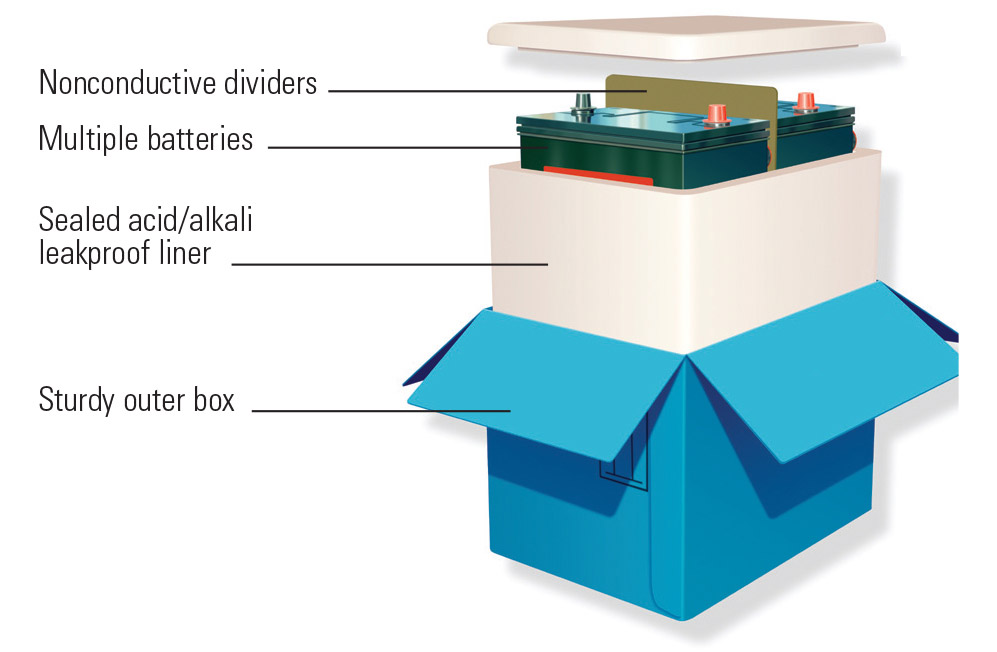Transporting lead-acid batteries requires careful handling to ensure safety and compliance with regulations.
- Packaging:
- Use appropriate packaging that meets regulatory standards for the transportation of lead-acid batteries. Packaging should be designed to prevent damage, leakage, and short circuits.
- Orientation:
- Secure the batteries in an upright position during transportation. This helps prevent electrolyte leakage and minimizes the risk of internal short circuits.
- Separation:
- If transporting multiple batteries, ensure they are adequately separated to prevent contact and potential short circuits. Non-conductive materials, such as cardboard or plastic dividers, can be used for this purpose.
- Ventilation:
- Ensure proper ventilation during transportation to disperse any gases that may be generated, especially if the batteries are charged. Vent caps on flooded lead-acid batteries should be in place and functioning correctly.
- Labeling:
- Clearly label the packages with appropriate markings indicating that lead-acid batteries are inside. Follow any specific labeling requirements mandated by transportation regulations.
- Loading and Unloading:
- Use equipment and procedures to minimize the risk of dropping or damaging the batteries during loading and unloading. Adequate equipment, such as lift gates or forklifts with proper attachments, should be used.
- Emergency Equipment:
- Have appropriate emergency equipment on hand, such as spill containment materials and personal protective equipment (PPE), in case of a leak or spill during transportation.
- Temperature Considerations:
- Avoid exposing lead-acid batteries to extreme temperatures during transportation. High temperatures can accelerate chemical reactions within the batteries, potentially leading to overcharging and gas generation.
Always consult and comply with the specific regulations and guidelines applicable in your region or the region where the batteries are being transported. Compliance with safety standards helps ensure the protection of individuals, the environment, and the integrity of the batteries during transit.


